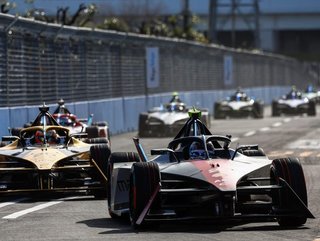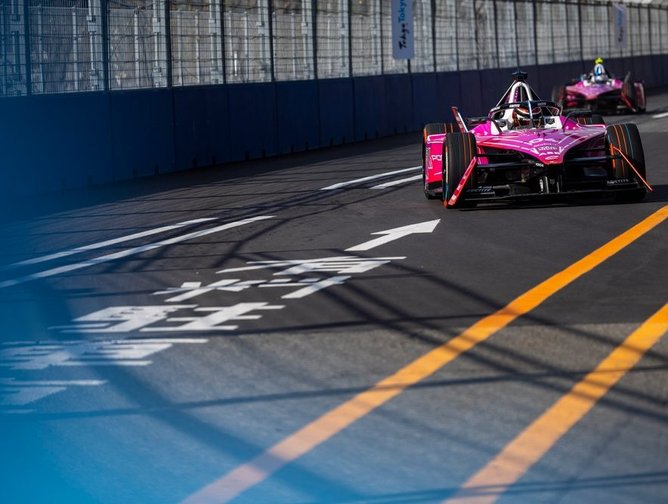Aggreko Revolutionises Formula E’s Sustainability Goals

Aggreko will ensure Formula E events are powered by renewable energy such as biofuel generators, solar arrays, and the latest battery technology.
The leading global energy solutions provider has signed a multi-year deal with the championship which is the world’s first net zero carbon sport inline with the 2020 definitions.
The series is working to meet its SBTi emissions reductions target of 45% across Scopes 1, 2 and 3 by 2030 compared to a 2019 baseline from a Season 5 (2019) baseline.
What is Formula E?

Formula E is the highest class of competition for electrically powered single-seater racing cars. Despite the power levels coming in considerably lower than that of Formula 1 (F1) — the highest class of international racing — however, Formula E vehicles are still able to reach speeds of up to a staggering 200mph, just 20mph shy of its F1 counterparts.
The cars in Formula E races are battery electric open-wheel auto racing vehicles, made according to the regulations of the International Automobile Federation (FIA). It attracts global audiences of great volumes, having hit a new fanbase record in the 2022/23 season of 344 million, up 17% year-on-year.
“We are well on the way to establishing Formula E as the most exciting and innovative motorsport for fans, alongside being the world’s most sustainable sport," said Formula E CEO Jeff Dodds.
The majority of Formula E’s 16 international races are held on street tracks rather than conventional purpose-made race tracks, but are constructed specifically for the event.
How is Aggreko working with Formula E?

Aggreko will supply renewable energy technology to Formula E events globally as part of this longstanding deal in the form of six 300kVA batteries, which will be harnessed to charge all race vehicles. But that’s not all — a variety of batteries of varying sizes will power the overall circuit at race locations, ensuring renewable energy is part of more than just the race itself. At any one time, each battery can charge four race cars simultaneously, equivalent to powering a whopping 84,000 mobile phones.
David de Behr, Aggreko Event Services’ Head of Sales, said: “Sustainability is at the heart of all that we do in Aggreko, making it the perfect fit for the world's most sustainable motorsport series. Aggreko is aiding Formula E’s energy transition journey and maintaining its position as the world’s most sustainable sport.
“This is in line with our passion to deliver temporary clean energy solutions to the events industry.”
The batteries supplied to Formula E are backed up via Stage V Hydrotreated Vegetable Oil (HVO) powered generators, infrastructure which emits 90% less CO₂ emissions compared to diesel. Aggreko technology will help power all elements of Formula E events — from cars, on-site hospitality, the fan village, energy points, timing and camera points — as part of the collaborative effort to ensure Formula E is as efficient and sustainable as possible.
Formula E’s CFO Tiziana di Gioia added: “It is vital to us in not just having the correct power to deliver our unique events, but done so in the most sustainable methods possible, something that Aggreko is a true leader and pioneer in.”
How does Formula E achieve net zero?

Formula E became the first global sport to be certified with a net zero carbon footprint from inception back in 2020. Julia Pallé, Sustainability Director at Formula E, said: “Formula E was created with the primary purpose to accelerate the adoption of electric vehicles and promote sustainable practice, raising awareness of the benefits to driving electric and how clean mobility can counteract climate change.”
She added that Formula E’s events are delivered with sustainability at the forefront, with its ongoing commitment to sustainability a constant reminder of what achievements have been reached so far, and its continued desire to innovate.
As well as utilising renewable energy sources like biofuel generators and solar arrays to power its events and racing in fully electric vehicles — which eliminates tailpipe emissions during races — Formula E has stringent sustainable event operations that cover waste reduction and eco-friendly transportation to further reduce its environmental impact.
Carbon offsetting is also a major part of its sustainability strategy, allowing it to operate with the lowest possible unavoidable emissions level. This allows for the series to compensate for unavoidable emissions. These strategies, both as individual sustainability pillars and as a collective, lays a foundation for Formula E’s work to minimise its carbon footprint and maintain a net zero carbon status. This solidifies its place as one of the most environmentally sustainable racing series in the world.
*******************
Make sure you check out the latest edition of Energy Digital Magazine and also sign up to our global conference series - Sustainability LIVE 2024.
*******************
Energy Digital is a BizClik brand.






